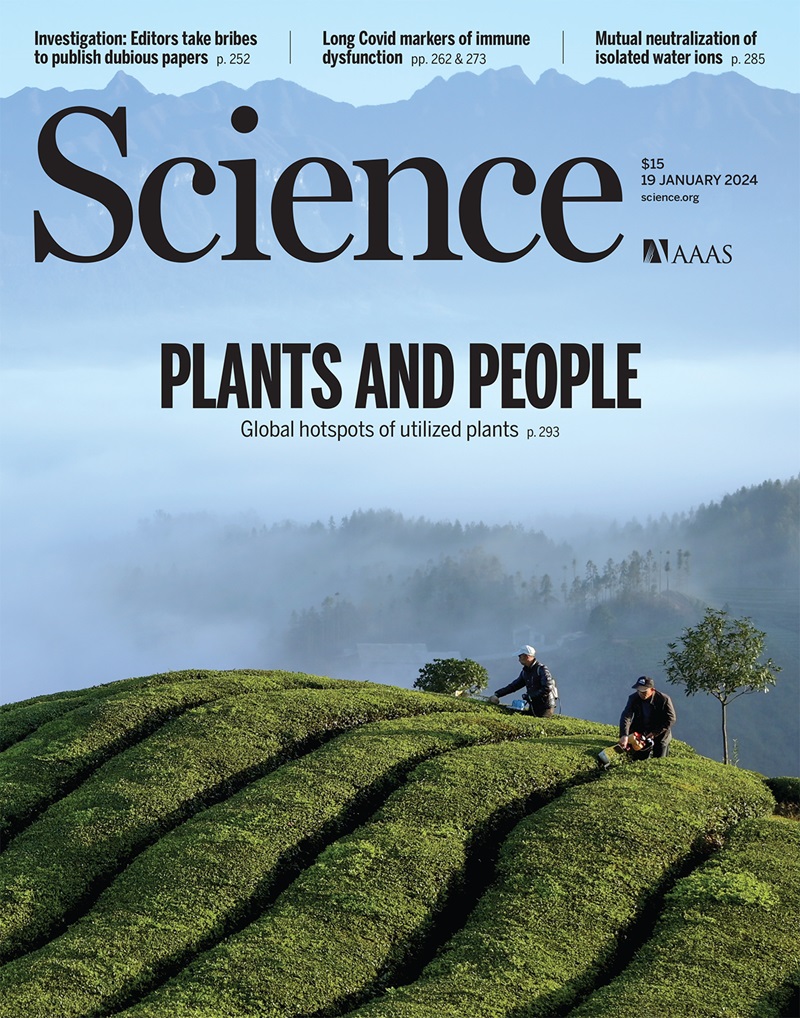Thermal acclimation of stem respiration implies a weaker carbon-climate feedback
IF 44.7
1区 综合性期刊
Q1 MULTIDISCIPLINARY SCIENCES
引用次数: 0
Abstract
The efflux of carbon dioxide (CO2) from woody stems, a proxy for stem respiration, is a critical carbon flux from ecosystems to the atmosphere, which increases with temperature on short timescales. However, plants acclimate their respiratory response to temperature on longer timescales, potentially weakening the carbon-climate feedback. The magnitude of this acclimation is uncertain despite its importance for predicting future climate change. We develop an optimality-based theory dynamically linking stem respiration with leaf water supply to predict its thermal acclimation. We show that the theory accurately reproduces observations of spatial and seasonal change. We estimate the global value for current annual stem CO2 efflux as 27.4 ± 5.9 PgC. By 2100, incorporating thermal acclimation reduces projected stem respiration without considering acclimation by 24 to 46%, thus reducing land ecosystem carbon emissions.
茎呼吸的热适应意味着较弱的碳-气候反馈
来自木质茎的二氧化碳(co2)外排是茎呼吸的一种代表,是从生态系统到大气的关键碳通量,在短时间尺度上随着温度的升高而增加。然而,植物在更长的时间尺度上适应了它们对温度的呼吸反应,潜在地削弱了碳-气候反馈。这种适应的程度是不确定的,尽管它对预测未来气候变化很重要。我们开发了一个基于优化的理论动态链接茎呼吸与叶片水分供应,以预测其热适应。我们表明,该理论准确地再现了空间和季节变化的观测结果。我们估计目前全球每年大气CO 2流出量为27.4±5.9 PgC。到2100年,在不考虑驯化的情况下,纳入热驯化将使预计的茎呼吸减少24%至46%,从而减少土地生态系统的碳排放。
本文章由计算机程序翻译,如有差异,请以英文原文为准。
求助全文
约1分钟内获得全文
求助全文
来源期刊

Science
综合性期刊-综合性期刊
CiteScore
61.10
自引率
0.90%
发文量
0
审稿时长
2.1 months
期刊介绍:
Science is a leading outlet for scientific news, commentary, and cutting-edge research. Through its print and online incarnations, Science reaches an estimated worldwide readership of more than one million. Science’s authorship is global too, and its articles consistently rank among the world's most cited research.
Science serves as a forum for discussion of important issues related to the advancement of science by publishing material on which a consensus has been reached as well as including the presentation of minority or conflicting points of view. Accordingly, all articles published in Science—including editorials, news and comment, and book reviews—are signed and reflect the individual views of the authors and not official points of view adopted by AAAS or the institutions with which the authors are affiliated.
Science seeks to publish those papers that are most influential in their fields or across fields and that will significantly advance scientific understanding. Selected papers should present novel and broadly important data, syntheses, or concepts. They should merit recognition by the wider scientific community and general public provided by publication in Science, beyond that provided by specialty journals. Science welcomes submissions from all fields of science and from any source. The editors are committed to the prompt evaluation and publication of submitted papers while upholding high standards that support reproducibility of published research. Science is published weekly; selected papers are published online ahead of print.
 求助内容:
求助内容: 应助结果提醒方式:
应助结果提醒方式:


